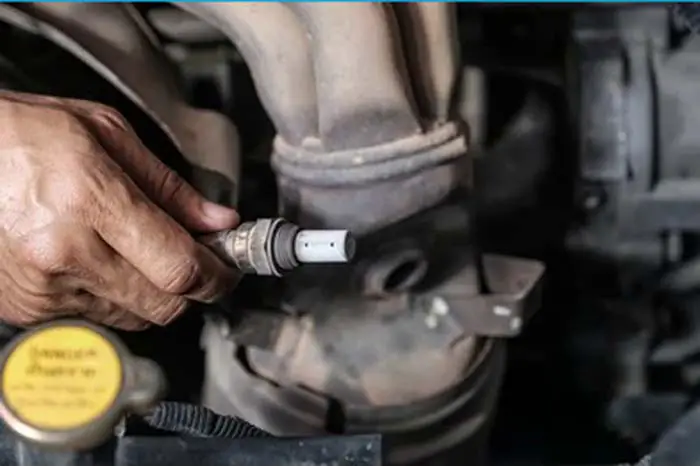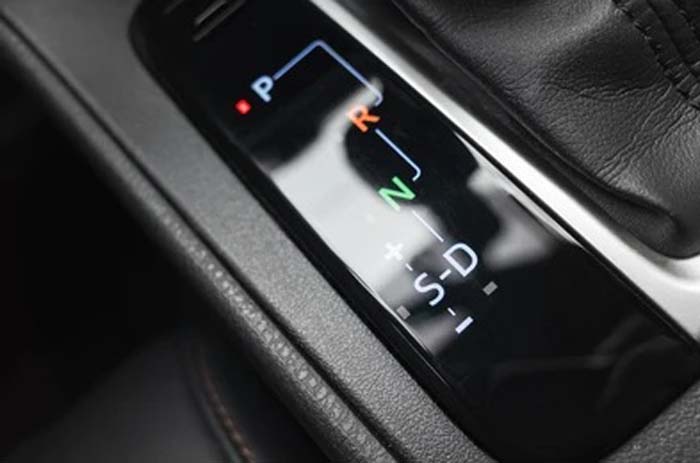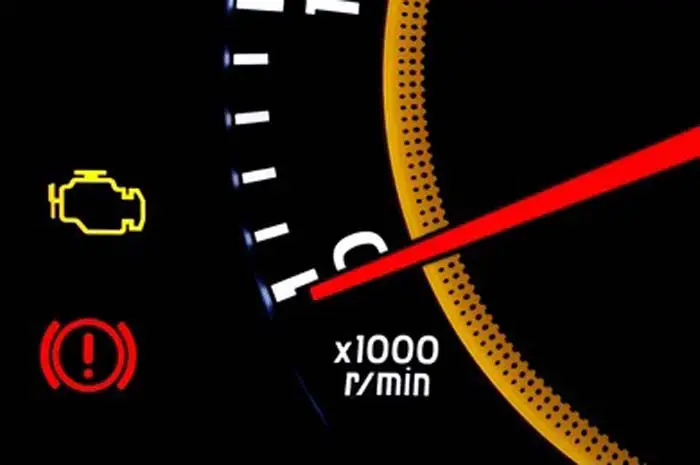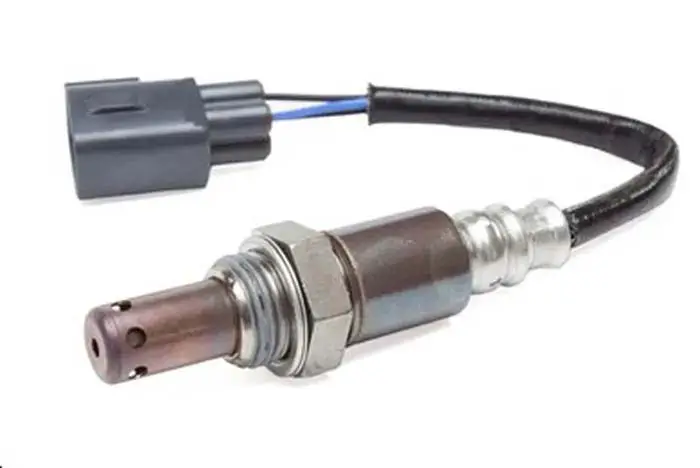
If you own a car or are planning to buy one, it is important to know what a lambda sensor is and what it does. A lambda sensor or oxygen sensor is a vital part of a car’s emissions control system. It helps to ensure that the car’s engine is running as efficiently as possible and that the discharge gases are clean.
The lambda sensor, also known as the O2 sensor, is a part of the exhaust system. Cars produced after 1980, have a lambda sensor. These sensors provide data to the engine control module to regulate the air-fuel ratio.
You will learn everything about what the lambda sensor is in a car, how it works, and its construction explained in easy-to-understand language.
Related Post: Where Is Oxygen Sensor Located
What Is A Lambda Sensor In A Car
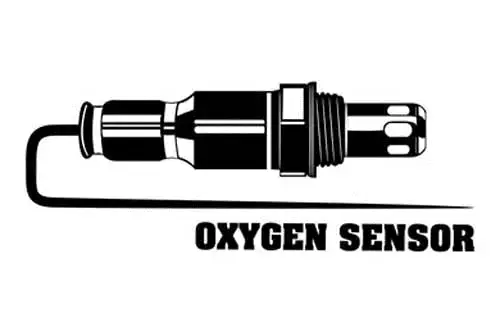
A lambda sensor (λ) also called O2 Sensor or An oxygen sensor is an electronic sensor that monitors the oxygen content in the exhaust gas in the exhaust manifold after the combustion. It measures the oxygen concentration (amount of oxygen) in the discharge gas to calculate and adjust the fuel mixture accordingly.
The function of the lambda sensor is to reduce exhaust emissions and to know whether the catalytic converter is working perfectly or not. It prevents the engine from running lean or rich by maintaining a stoichiometric ratio for fuel consumption. It also improves mileage by as much as 40%.
High-pressure and temperature exhaust gases when travels through the manifold of exhaust, come in contact with the lambda sensor, placed before the catalytic converter, which causes voltage production, and that lambda sensor signal is then sent to the ECU to regulate the air-fuel ratio.
At normal temperatures, the lambda sensor does not produce a voltage on its own; it produces a voltage when it gets hot at approximately (316 °C) 600 °F. That’s why the sensor is used with a heater element to make its sensing element hot quickly, and the sensor element starts getting hot the moment car starts.
Older single wired-lambda sensors had no heater and the sensor used to wait for a few minutes for the discharge gases to make it hot after that it used to produce the voltage. The time of the sensor when the engine has started, and the sensor starts to produce the voltage causes pollution problems that are connected to the slow start-up process.
On the other hand, the lambda sensor equipped with the heater is heated through the use of a heating element by allowing the current when the engine has started.
Related Post: What Causes An Oxygen Sensor To Fail
Construction Of Lambda Oxygen Sensor
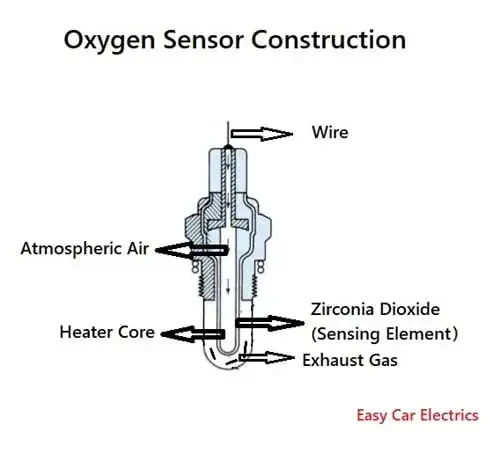
By shape, the typical lambda sensor is usually the same as a spark plug. The lambda sensor has a sensing element at the front of the sensor called zirconium dioxide enclosed within a steel shell.
The sensing element is further connected to the platinum electrode where wires lead to the engine control unit. The sensing element is placed around a heater core. The heater core has a gap from the inside in which the atmospheric air can travel.
Both the sensing element and heater core have two, two wires. The sensing element has two wires (earth and hot wires), which are connected to the ECU. Similarly, the heater core has two wires (earth and hot wires), and the hot wire goes to the relay in the fuse box.
How a Lambda Sensor Works
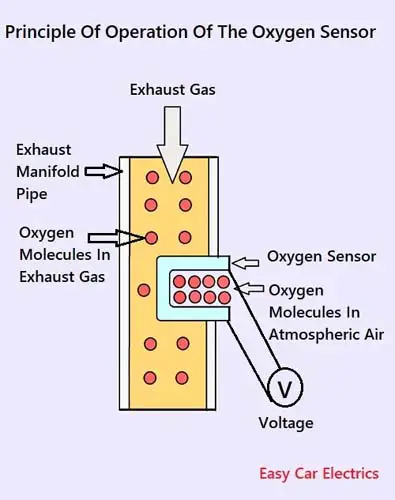
The lambda sensor or oxygen sensor working principle is based on ionization, which leads to producing their own voltage. The exhaust gas in the manifold of the exhaust contains oxygen molecules that hit the sensing element after flowing through the holes in the steel shell.
Meanwhile, the outside atmospheric air is made to flow through the gaps between the cables at the end of the sensor. The heater core inside the lambda sensor heats the atmospheric air outside of the exhaust manifold. This heated air enables the ions (electric charge) to produce voltage.
So, when the exhaust emission flows through the lambda sensor inside the exhaust pipe, the oxygen concentration in the atmosphere will be high compared to the remaining oxygen molecules present in the exhaust emission.
This difference in concentration of the oxygen ions in the exhaust gas and the atmospheric air produces ions from higher concentrations to lower concentrations. These oxygen ions’ movement generates voltage difference and causes to build in the voltage in the sensing element.
The ECU then compares it with the pre-stored standard data to decide whether the mixture is rich or lean. And these calculations manipulate the air/fuel mixtures during the subsequent stroke.
Remember, the lambda sensor does not measure the amount of oxygen present in the exhaust emission but rather the difference between the amount of oxygen in the exhaust gas and the atmospheric air.
Related Post: Oxygen Sensor: 1, 2, 3, 4 Wire O2 Sensor Wiring Diagram
Why is a Lambda Sensor Important
A lambda sensor, also known as an oxygen sensor, is an important component in a vehicle’s exhaust system. This sensor is installed to determine the oxygen level in the exhaust gases and send this information to the vehicle’s engine control unit (ECU) in form of sensor voltage. This help vehicle to work efficiently and economically.
The ECU then uses this information of difference in oxygen value from the required amount to adjust the fuel-air ratio of the engine to ensure optimal combustion. This result in maintaining optimum operating temperature and result in the usage of a lean mixture instead of a rich mixture. This not only helps improve engine performance but also reduces harmful gases from the vehicle by reducing the oxygen content of the exhaust.
Without a lambda/discharge gas sensor, the engine would not be able to accurately adjust the level of oxygen, resulting in decreased performance and increased emissions. In some cases, a defective discharge gas sensor can also cause damage to the engine.
Therefore, the discharge gas sensor plays a crucial role in the proper functioning of a vehicle’s engine and ensuring it meets emissions standards.
Types of Automotive Lambda Sensors
There are two main types of lambda sensors:
- Zirconia Sensors: Zirconia sensors are the most common type of lambda sensor. These sensors operate the principle of a solid-state electrochemical cell. The response time of the sensor is generated by a voltage signal based on the oxygen level in the exhaust flow.
- Titania Sensors: Titania sensors were introduced to measure the oxygen level in the exhaust gas. These sensors are equipped with ceramic material called titanium dioxide, which generates a voltage signal by emission test based on the oxygen level in the exhaust gas.
Symptoms of Faulty Lambda Sensor & Fixing
A faulty lambda/discharge gas sensor can cause a range of symptoms in a vehicle, including decreased fuel efficiency, poor engine performance, increased emissions, and even engine damage. Here are some common symptoms.
- Check Engine Light: A defective discharge gas sensor can trigger the check engine light on the dashboard. So, always check the engine light, especially for modern sensors.
- Decreased Fuel Efficiency: Lambda sensor is used to quantify the oxygen content in exhaust. The output of the oxygen sensor will be faulty if it is not working properly and the engine may consume more fuel than usual, leading to decreased fuel efficiency.
- Poor Engine Performance: A poor sensor affects the whole engine management of the vehicle affecting engine operation like running roughly, idling poorly, or even stalling.
- Increased Emissions: A faulty sensor makes the sensor measure the wrong value of exhaust smoke. Similarly, the wrong value of change exhaust gas composition will be measured (lower oxygen or higher oxygen value). This will disturb the amount of fuel entering the engine and the vehicle may produce more emissions than usual due to an incorrect fuel-air ratio.
To diagnose faulty automotive sensors like lambda sensors, a mechanic will typically use a diagnostic tool to read the vehicle’s error codes. The discharge gas sensor may show up as a fault code, indicating that it is the wrong sensor operation. A mechanic may also perform a visual inspection of the sensor to check for any physical damage or corrosion.
The sensor must be replaced if a defective discharge gas sensor is diagnosed. The replacement process will vary depending on the make and model of the vehicle but typically involves removing the old sensor and installing a new one. It’s essential to use the correct type of sensor for the vehicle and to follow the manufacturer’s instructions carefully by checking the control circuit diagram.
In conclusion, if you suspect that your vehicle has a defective discharge gas sensor, it’s essential to have it diagnosed and replaced as soon as possible to avoid any further damage to the engine and to ensure the vehicle runs smoothly and meets emissions standards.
Frequently Asked Questions (FAQs)
An oscilloscope is an electronic instrument used to measure and display voltage signals over time. In car repair, an oscilloscope can be used to diagnose faults in the electrical system e.g, if a lambda probe sensor isn’t working, it can be used to check the sensor signal and determine if the sensor is faulty.
If your car’s discharge gas sensor isn’t working, you may notice symptoms such as poor fuel economy, rough idling, or a check engine light. You can diagnose a defective discharge gas sensor using a diagnostic tool, such as an oscilloscope, to check the sensor signal. You can also test the sensor heater using a multimeter to ensure that it’s getting power from the car battery. If the sensor is functioning properly but the lambda value is low, there may be a problem with a second sensor, such as a band sensor, that’s causing a low oxygen reading.
Sign Up

